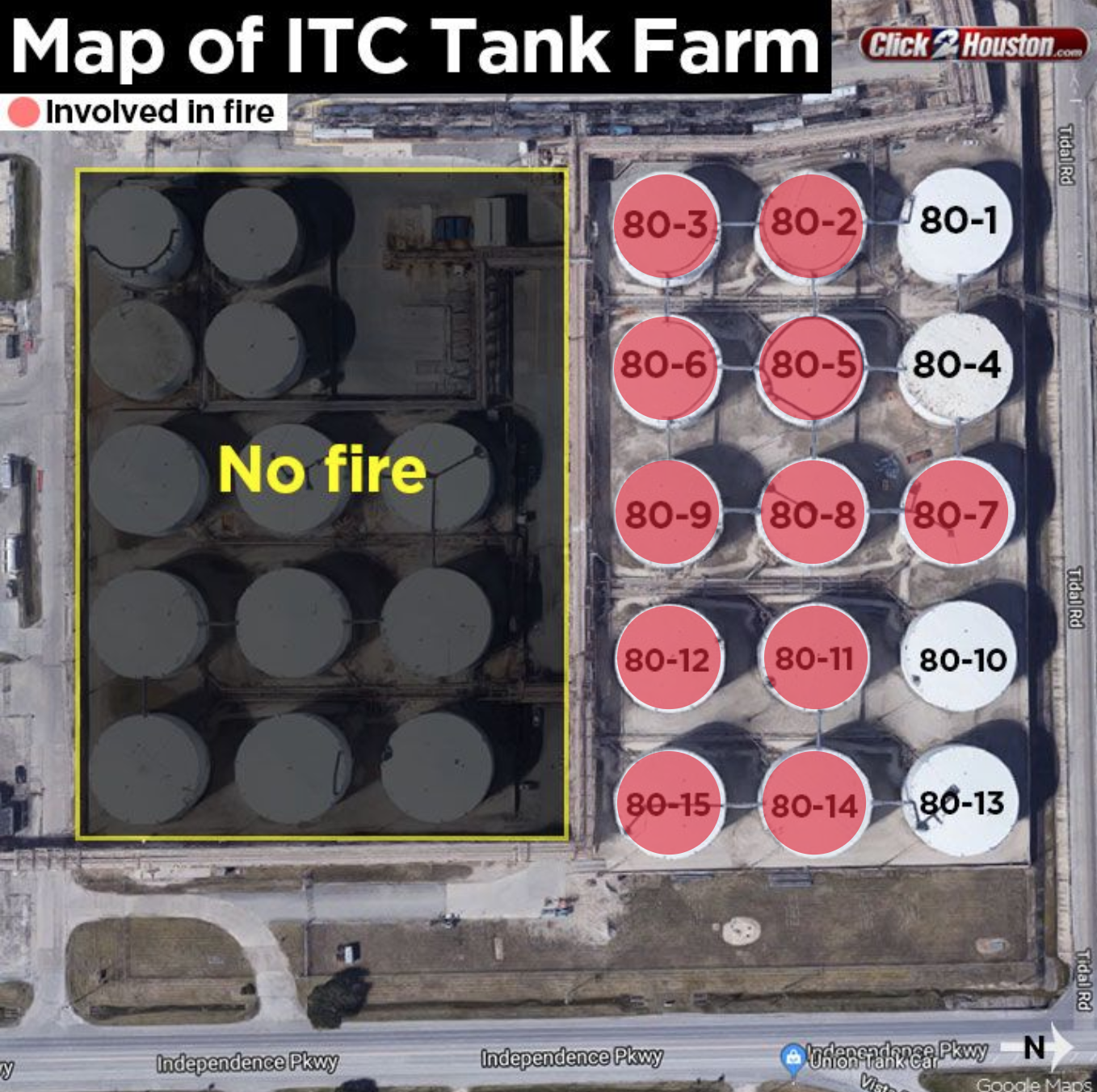Deer Park Fire
3.22.19
Chemical fires are always a toss-up. Even if you know what it burning it's difficult to contain things on a large scale. That's why when the Intercontinental Terminals Company facilities in Deer Park went into flames, burning unknown substances, the situation was a downright fiasco. Officials noticed a fire on March 17th, at 10am. As soon as 10:30 the police were getting calls by various agencies to question what was burning, though no shelter-in-place was called yet. Deer Parks head of services couldn't get in contact with anyone at ITC as late as 10:47 to see if any toxic chemicals had been involved. This event impacted the community, whose residents were calling the police station almost immediately after the fire broke out to just report that they could see smoke but didn't know where it was coming from.
After everything calmed down ITC released a statement that said that the tanks consumed in the blaze contained toluene, naphtha, xylene and pyrolysis gasoline
. Air quality tests were still ongoing but they do know that the air quality around the site is compromised. Volatile compounds were found 6 miles away from the site, but still below hazardous levels. Most of the aerosols released were approx. 4,000 feet above Houston
but if these aerosols make it to ground level there are severe health implications for compromised groups such as those with asthma, lung diseases, the young, and the elderly. Complications involve coughing, difficulty breathing, burning, [physical] irritation
as well as other symptoms related to chemical exposure. Locals were advised to keep an eye on the Air Quality Index (AQI) around this time and to take precaution as needed. The AQI in the US is fairly conservative in comparison to parts of south and eastern Asia, but for those battling the fire the index means nothing. Since nothing will stop the blaze except to remove the fuel or to let it all burn off the firefighters and fire responders are mainly working on containing the fire. This involves using large amounts of foam which can also irritate one's breathing ways if exposed for a long duration of time.
Toluene exposure can cause dizziness and euphoria, not to mention liver and kidney damage. Napthalene requires a respirator to work around. And xylene also causes nausea and vomiting. Overall, this is a pretty nasty mix of chemicals to be battling and it will be interesting to observe how their unfiltered release into the environment impacts not only air but water quality in the surrounding areas.
